Table of Contents Show
Andy Serkis’ new film Venom: Let There Be Carnage (2021) is the latest Marvel Studios-Sony collaboration to hit theaters. The film is a direct sequel to Venom (Fleischer, 2018) and further deepens the symbiotic relationship between Venom and his human host Eddie Brock. The symbiotic pair are the quintessential odd couple Let There Be Carnage, constantly bickering and arguing about their living situation or fighting bad guys. However, when the film is focused on how Venom and Eddie can’t live without each other — literally and metaphorically — the film is at its best.
While Venom certainly had queer subtext, the sequel has overtly queer themes. Let There Be Carnage is an unabashedly funny film that isn’t afraid to delve into the body horror genre or shy away from the queer nature of Venom and Eddie’s relationship. Instead, the film creatively borrows from romantic comedy tropes to show that the pair cannot live without each other. And by actively delving into the queerness of Eddie and Venom, Serkis proves he doesn’t need to queerbait his audience to get a hit.
Venom: Let There Be Carnage (2021)
There will be spoilers for Venom: Let There Be Carnage (2021) going forward; beware.
Let There Be Carnage picks up about a year and a half after the events of Venom. Eddie’s career is slowly on the rise again since notorious serial killer Cletus Kasady will only give Eddie statements. After an interview, Venom catches sight of Cletus’ cell wall that has carvings showing where Cletus buried his victims; this makes Eddie’s career skyrocket. But for all of Eddie’s newfound success, he cannot bring himself to recognize that Venom has been the source for all his achievements. Venom is frustrated that Eddie will not let him go out and eat bad guys’ brains and be the Lethal Protector.
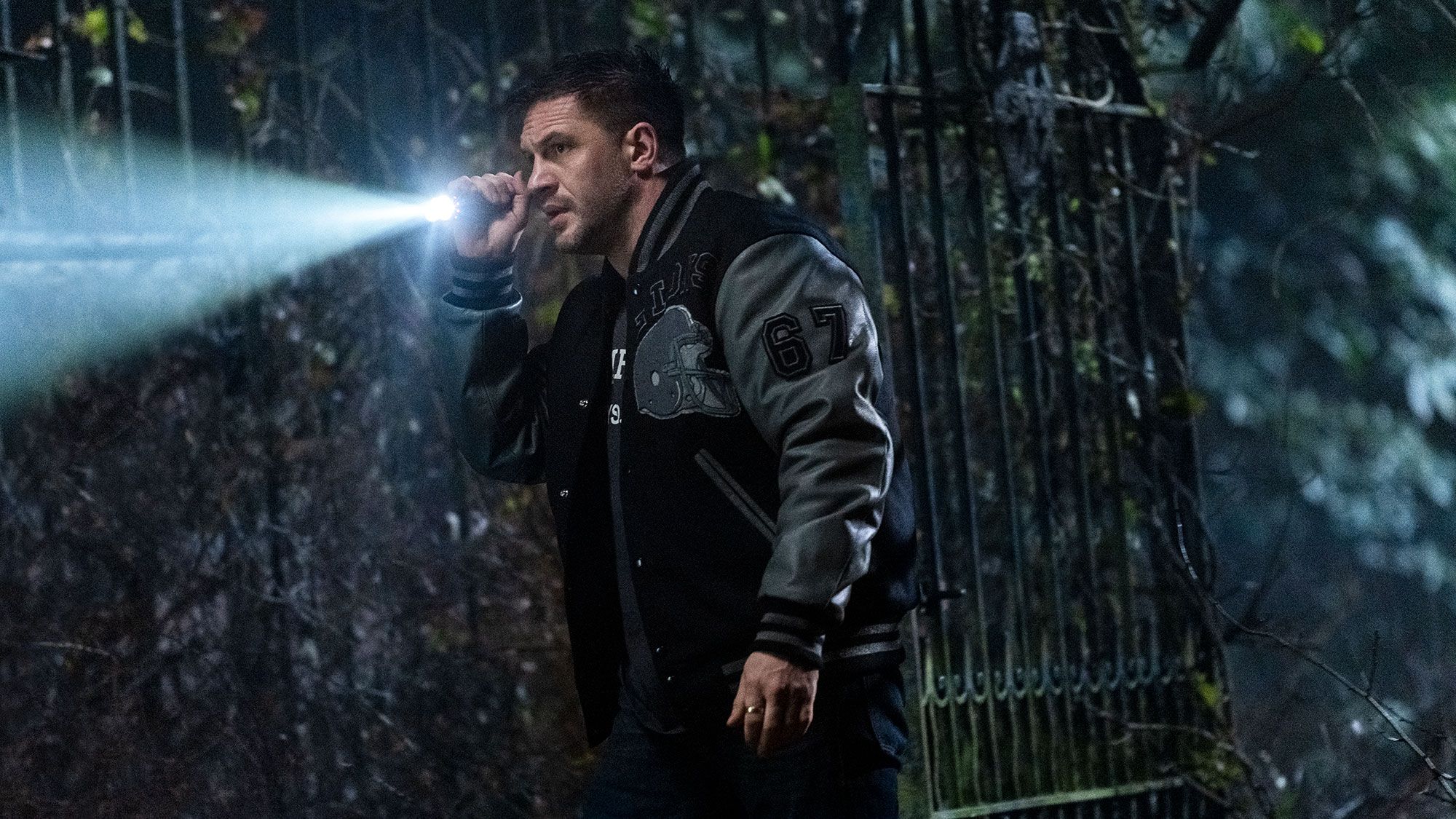
Ahead of Cletus’ execution, Eddie goes for one last interview where he gets insulted by Cletus. Venom attacks him, but Cletus bites Eddie’s hand and ingests his spawn Carnage in the process. Angry with Venom for hijacking his interview, Eddie picks a fight with him when they return home. Venom’s anger at his true, murderous nature being repressed boils over into the argument, and the two become so angry with each other that the symbiote detaches himself from Eddie’s body in what is more or less a divorce. Unbeknownst to the two, Carnage has attached himself to Cletus during his execution; the pair escape and breakout Cletus’ lover Frances Barrison, aka Shriek, from a mental institution and go on a revenge filled rampage across Northern California.
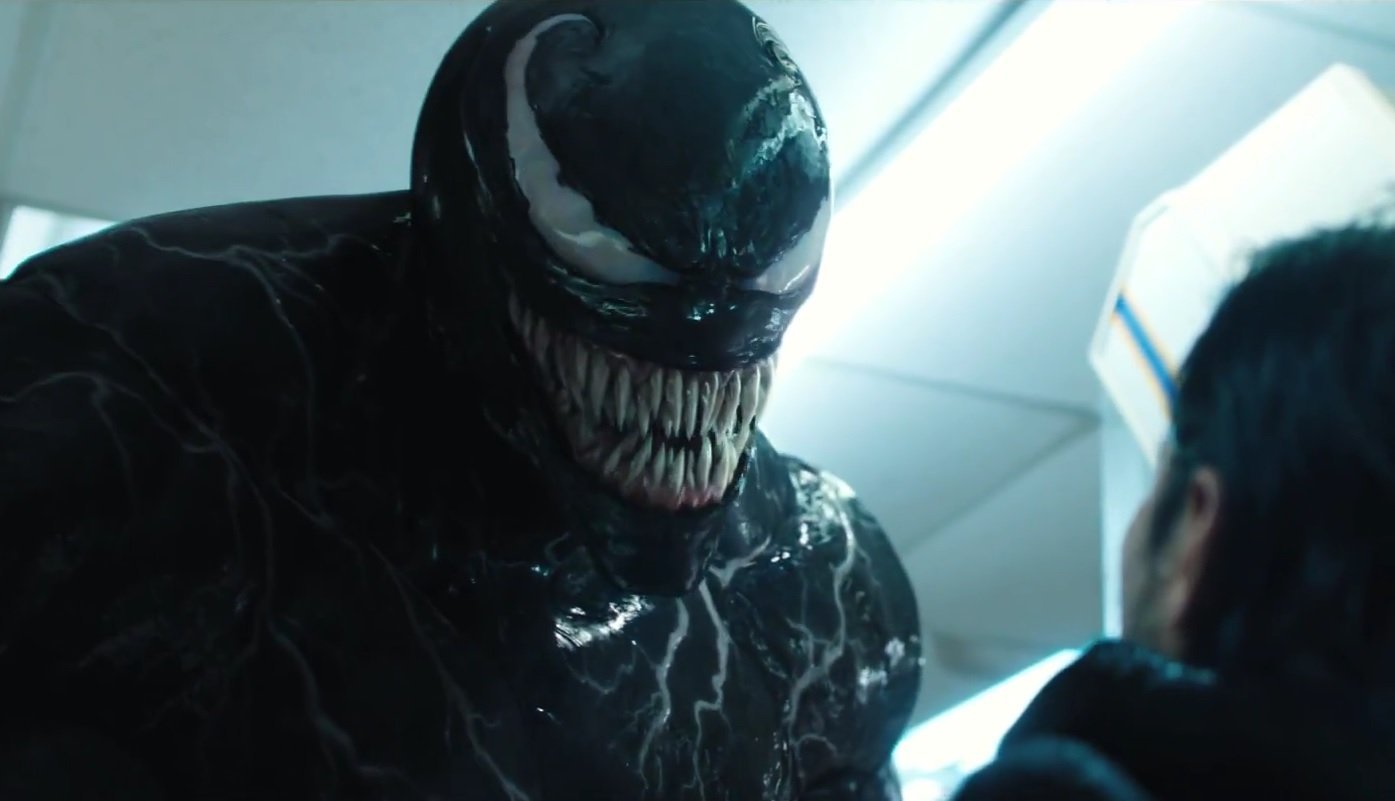
While separated, Eddie gets taken into custody for suspected collusion with Cletus, and Venom goes to a rave where he proudly walks about in his true form. Afraid that Venom is the one in symbiosis with Cletus, Eddie calls Anne to help him find the symbiote again. After a rom-com-like-reunion between Venom and Eddie, the pair returns to symbiosis and defeat Carnage before retiring on a romantic beach at the end of the film. Let There Be Carnage needs the love-hate relationship between Venom and Eddie to work. Without their very queer symbiosis, Carnage isn’t defeated, Venom cannot live on Earth, and Eddie is without a career. But what does queer mean, and how does Venom and Eddie’s alien-human relationship fall under the queer umbrella?
Defining Queerness
Queer is a word that actively evades any hard and fast definition. It is an identity that is highly subjective and highly personal to the individual using it. But for this article, the definition of “queer” is that to be queer, or to have queerness, is to stand in resistance to an accepted norm in the context of identity, desire, and attraction.
Noreen Giffney refers to queer as:
“a contentious term and one that encompasses defiance, celebration, and refusal within its remit […] [and] a resistance to identity categories or easy categorisation” in “The ‘q’ word.”
(( Giffney, Noreen. “Introduction: The ‘q’ Word.” Philpapers, 2013. )).
The couple embodies this sort of queerness because of their symbiosis and Venom’s alien/monsterness. Venom makes Eddie stronger, and Venom cannot survive on Earth without Eddie’s body; they are bound together in a way that is far outside the realm of categorization in human terms like “love” or “romance,” which is why I refer to them as queer in this article. Their codependency in the comics even resulted in the pair becoming pregnant and giving birth to a brood of baby symbiotes, an unconventional (and very queer) manifestation of their symbiosis.
The Queer-Monster Connection
Some queer folks are rightfully wary of their representation in massive media franchises: narcissistic man and his murderous alien life partner in co-dependent symbiosis. However, the relationship between queerness and otherness (especially in the form of monsters and aliens) is extensive. While anti-monster queer folks may dislike the idea of media seeing them only as monstrous alien villains with a thirst for human flesh, there’s a certain joy in seeing yourself as the villain sometimes and catharsis in queer readings of horror and monster movies. The unique relationship between queer folks and monsters, aliens, and cryptids was once a way for non-queer folk to express their disgust with queer folks.
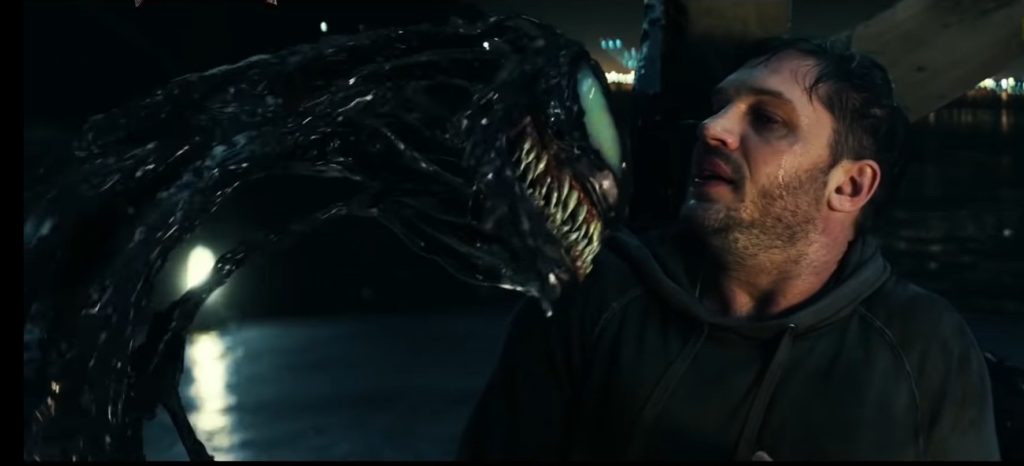
Nowadays, that kind of presentation is much less front and center now that queer folks actively reclaim and write monster narratives to depict their lived queer experiences. To be queer in a heteronormative world is to be other, like being a monster or alien in a world of humans is to be other. The reaction of the “normative” world to queer people and monsters/aliens is almost always extreme violence and/or elimination out of fear for this other. Readers might remember 2017 when Australian horror flick The Babadook was mistakenly (or perhaps not so mistakenly) put into the LGBTQ films tab on Netflix. The titular creature from the film became a queer icon that summer’s pride and raised interesting questions about how the film, which used the Babadook as an allegory for repressed grief, could be a metaphor for queer repression by the heteronormative world at large. The example of The Babadook becoming a queer film by virtue of a happy accident and queer folks deciding to take it on as theirs is similar to how queer fans took on the Venom-Eddie ship.
Queer Moments In Let There Be Carnage
Let There Be Carnage is a visual masterpiece. Serkis’ long career of motion capture acting provides CGI masterpieces in Carnage being born and later the climactic battle between Venom and Carnage in a huge cathedral. But the highlight of the film, and why fans continue to flock to theatres, is the deepening relationship between Venom and Eddie. When the story focuses on the symbiotic pair, it’s at its best. Instead of queerbaiting Venom and Eddie’s relationship, the creative team acknowledged the love and connection between the two. Marvel films have struggled with queer representation in the past, especially in the Marvel Cinematic Universe, so to see their relationship be so openly acknowledged in Let There Be Carnage is both refreshing and uplifting.
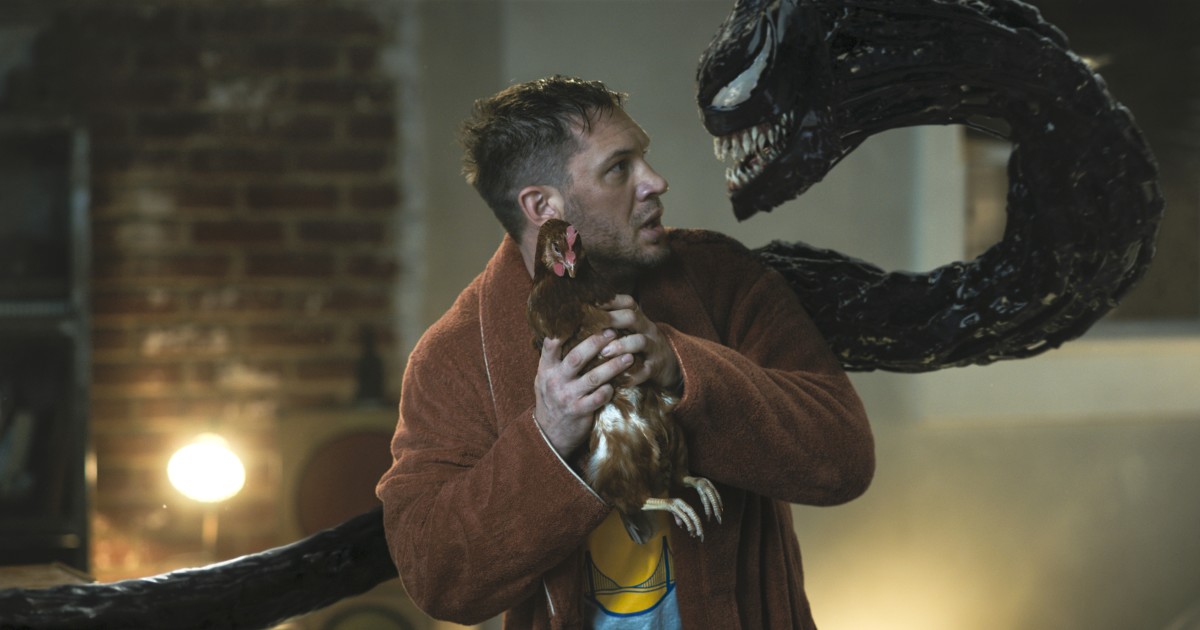
Avengers: Endgame (Russo Brothers, 2019) contains a botched pass at LGBT representation. Loki confirmed the titular character’s bisexuality, the series mishandled the genderfluidity of Loki’s character. Let There Be Carnage isn’t afraid to call Venom and Eddie what they are: two beings very much in love, and in a queer relationship due to their symbiosis. One of the most prominent themes in Let There Be Carnage is authenticity; Venom himself especially struggles with being authentic because he must remain concealed at all times. This struggle is why the Day of the Dead rave scene is crucial for Venom as it shows him embracing his identity, especially after being repressed and unrecognized for his abilities by Eddie for so long. He happily marks the rave as his “coming out of Eddie” party, similar to any coming-out event for any LGBTQ+ individual or queer person would have to do in their life. Raves are also a huge part of queer subculture, so it’s not shocking that Venom — in his true form to boot — is accepted by the rave-goers almost immediately.
Rom-Com Moments In Let There Be Carnage
Since Venom was hailed as a rom-com by a handful of vocal critics, director Serkis and co-writers Tom Hardy and Kelly Marcel consciously leaned into those tropes for Let There Be Carnage. The romantic comedy thrives on moments of miscommunication, second chances, and over-the-top apologies — all of which are present in Serkis’ film. Therein lies the inherent comedy of the film, as audiences see a human and the mass of black alien goo, he’s more or less forced to interact with act as the “opposites attract” or “odd couple” style of rom-com couple. Even though the two have different outlooks on life — Eddie wants to live an everyday, average life, and Venom wants to be a vigilante — they know they can’t live without each other.
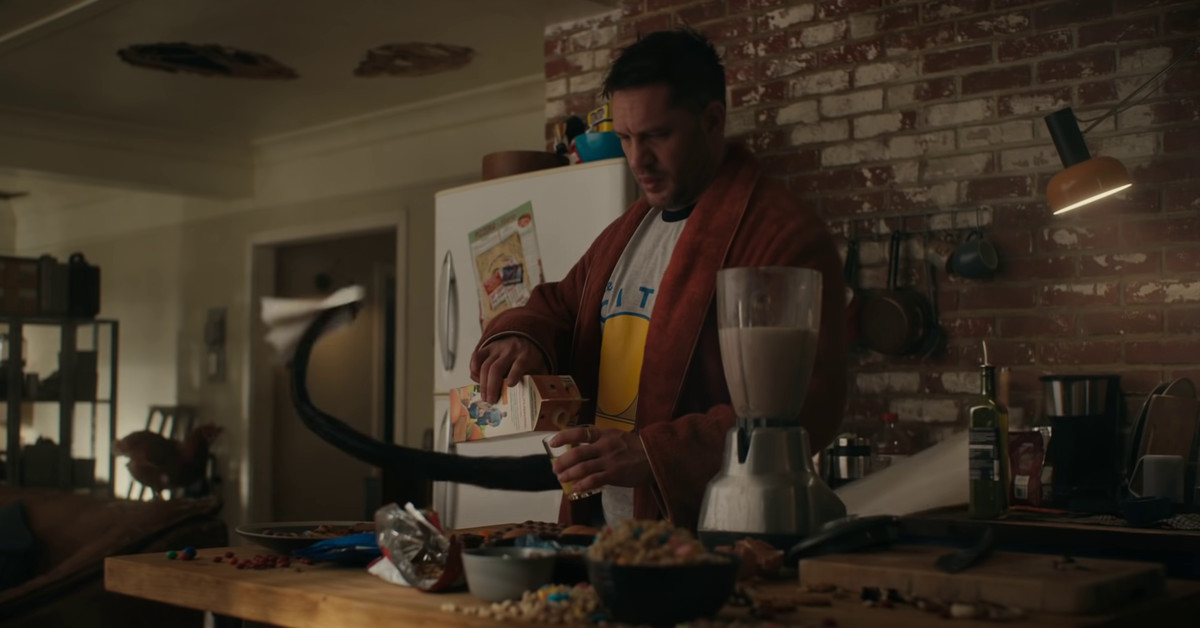
Their explosive divorce/break-up features an amusing “take your things and get out!” line from Venom, who goes on a “Picture To Burn”-style trashing of Eddie’s apartment before unbonding himself from Eddie. The scene is a classic rom-com fight between the two lovers as they unpack every problem in the relationship before going their separate ways — for a short while, of course. He laments that Eddie could not see him living out his authentic self at the rave and clearly misses him. Venom and Eddie’s “made for each other”/soulmate-like bond is further emphasized by the fact that none of his temporary hosts can sustain him long-term as Eddie can.
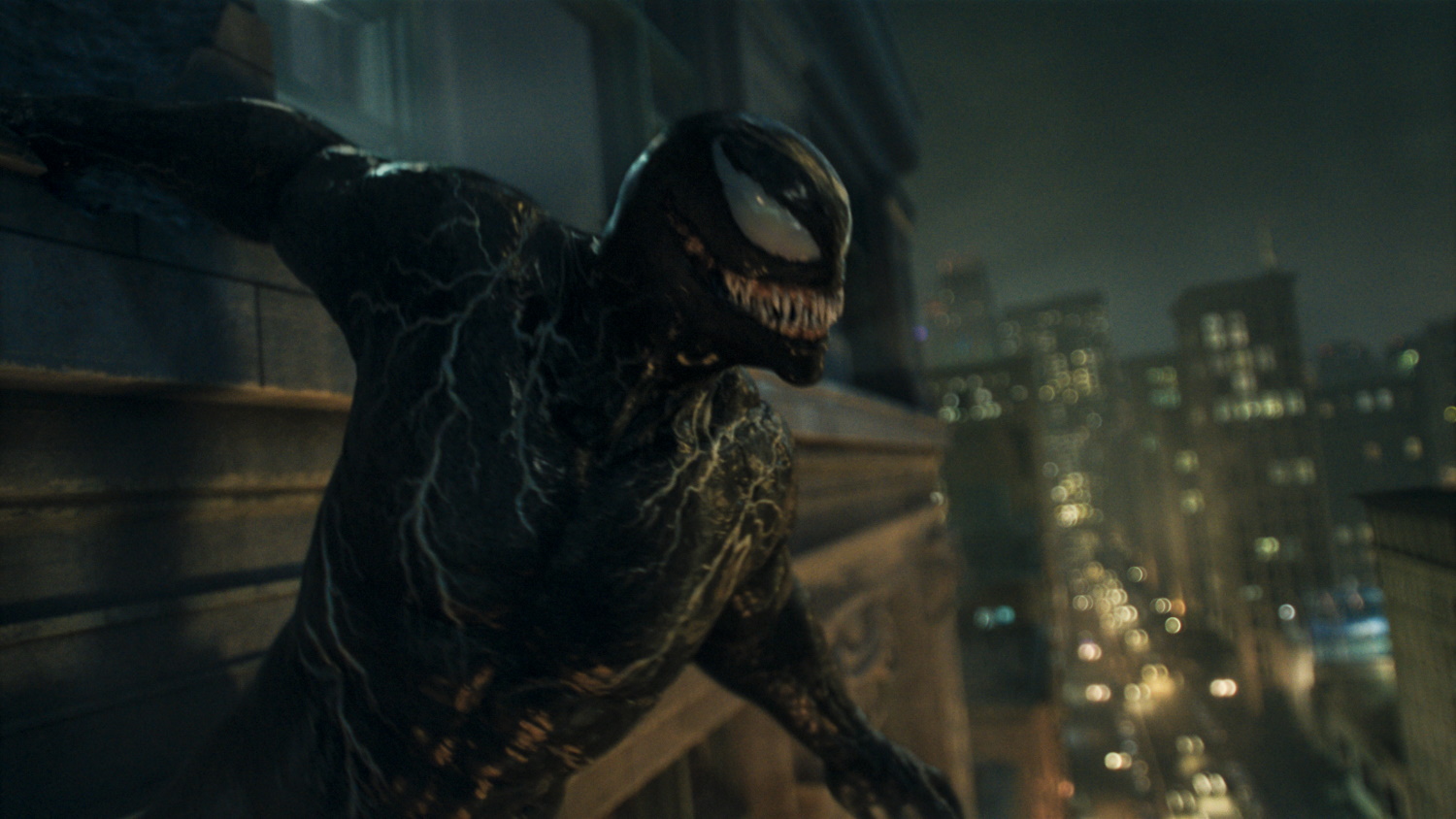
Their reunion also features hallmarks of many rom-com apologies, with one character requesting that the one who may have wronged or slighted them beg for them back in a grand romantic gesture. Venom insists that Eddie beg to have him back and keeps telling Eddie each apology isn’t enough; it’s played for laughs and to show just how dedicated Eddie is to the symbiote. The apology wasn’t just played for laughs, as Dan remarks to Anne:
“These two need serious couple counseling!”
The make-up instead emphasizes the fact the two are a couple. The final scene of the film is a quintessential happy rom-com ending for the symbiotic pair, as Venom and Eddie lounge together on a beach. In the scene, Venom materializes over Eddie’s feet in the sand and drapes a tendril over his shoulder. He thanks Eddie for bringing him to the beach, and Eddie apologizes that Venom can’t feel the wind in his hair. Almost without thinking, Venom counters with the Osho, saying, “if you love a person, you accept the total person, with all the defects.” The love confession is the first of its kind between the two and shows Venom’s softer side. Eddie calls the symbiote out for saying he loves him, but it’s not out of malice — and most importantly, he doesn’t reject the love confession either, implying he loves the symbiote back. He vows to Venom that they will become the Lethal Protector, much to his happiness. As they stare off into the sunset, the audience knows that the two have mended their rough patch and will be together for a very long time.
Does Let There Be Carnage Succeed As Queer Media?
For the creative team to embrace all of the queer themes of the Venom-Eddie relationship in Let There Be Carnage is a triumph in queer story-telling. They knew that fans loved the ship and that the pair are overtly queer in the comics, so instead of baiting their relationship for media attention, they actually followed through and put them through all the beats of a romantic comedy. From showing Venom and Eddie as an odd couple getting over their honeymoon phase to their big beachside acceptance of each other, Serkis and his creative team reaffirm the love, bond, and connection between the human and alien.